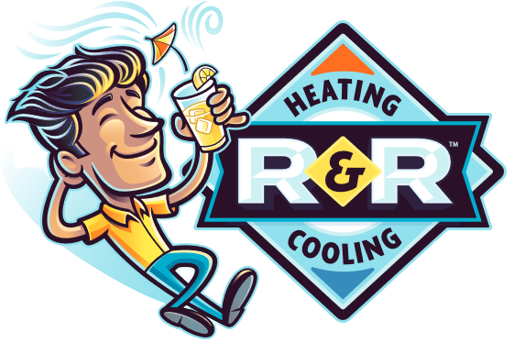R&R Mechanical is expert in offering sophisticated heat pump solutions designed to serve diverse climates and environments. This detailed guide will guide you through the fundamental aspects of heat pumps, offering insights into how they work, the different types available, installation must-knows, and how to choose the right one for your specific climate zone.
How Heat Pumps Work: The Science Behind Efficient Heating and Cooling
Heat pumps function on a straightforward but brilliant concept: rather than producing heat, they transfer heat from one location to another. During winter, a heat pump pulls warmth from the external air or the ground and moves it inside. In contrast, during summer, it changes function and operates similarly to an air conditioner by drawing heat out of your house and expelling it outside. This dual functionality makes heat pumps an all-in-one heating and cooling complete guide solution.
The core components of a heat pump include:
- An exterior unit equipped with a coil and a fan
- An indoor unit that also has a coil and a fan
- A coolant that flows throughout the system, capturing and discharging heat during its journey.
This method is both powerful and economical, rendering heat pumps a viable choice for individuals aiming to lower their energy use and environmental impact.
Types of Heat Pumps: Air-Source, Ground-Source, and More
R&R Mechanical offers a variety of heat pump options to suit different needs and preferences:
- Air-Source Heat Pumps: The most common type, ideal for moderate climates. They transfer heat between your house and the outside air.
- Ground-Source (or Geothermal) Heat Pumps: Harness the constant temperature of the ground for efficient temperature regulation and comfort, suitable for a wider range of climates.
- Water-Source Heat Pumps: Use nearby water sources as a heat exchange medium. This type requires access to a body of water.
Each type has its own set of benefits and is best suited to particular environments and applications.
Installation Essentials: What You Need to Know
The installation of a heat pump system is a critical process that influences its efficiency and effectiveness. Here are some key considerations:
- Site Assessment: R&R Mechanical will carry out an in-depth evaluation of your site to identify the optimal heat pump variant for your premises.
- Size and Capacity: Proper sizing is crucial. An undersized heat pump won’t adequately heat or cool your space, while an oversized one will incur unnecessary energy costs.
- Professional Installation: Our accredited technicians guarantee the proper installation of your heat pump, enhancing its efficiency for efficient heating and cooling.
Choosing the Right Heat Pump for Your Climate Zone
Selecting the appropriate heat pump for your climate zone is vital for maximizing its efficiency and longevity. Here are some guidelines:
- Moderate Climates: Air-source heat pumps are typically sufficient for areas with mild winters.
- Colder Regions: Consider a ground-source heat pump for locations with harsh winters, as they provide consistent temperature control regardless of the outdoor air temperature.
- Water-Accessible Areas: If you have access to a water source, a water-source heat pump can be an efficient and cost-effective solution.
Heat pumps offer a versatile, efficient heating and cooling solution for a variety of settings and climates. Whether you aim to enhance your current HVAC system or are considering the installation of a new setup, R&R Mechanical possesses the knowledge and variety of choices to fulfill your requirements. With insight into the operation of heat pumps, the available models, and key considerations for installation and selection, you’re equipped to make a well-informed choice that guarantees long-lasting comfort and effectiveness.














